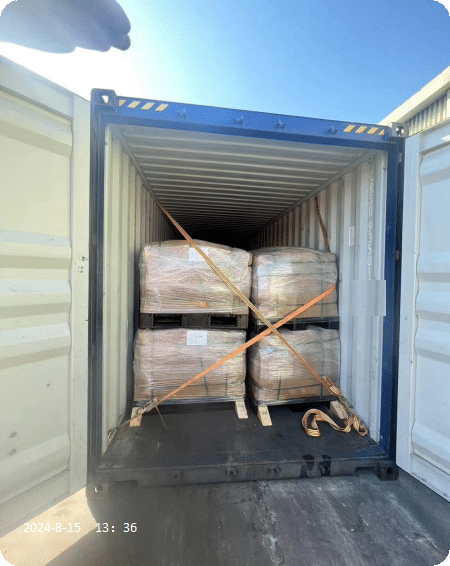Shipping Overview
- Date of Shipment: August 15, 2024
- Port of Loading (POL): Qingdao, China
- Port of Discharge (POD): Melbourne, Australia
- Carrier & Voyage: MSC
- Container Type & Volume: 1*40HQ / 66CBM
- Product Description: For decoration
- HS Code: 7326209000


Product Information
- Product Name: Iron Grid Frame
- Material: Iron
- Use: Decoration
In this case study, a 40HQ container carrying iron grid frames for decorative purposes was shipped from Qingdao, China, to Melbourne, Australia, on August 15. The goods were efficiently managed by the MSC carrier. The sea freight option was chosen for its cost-effectiveness and capacity to transport large volumes, making it ideal for businesses shipping non-urgent cargo at lower rates compared to other methods like air freight.
Key Benefits of Sea Freight Shipping
- Cost-Effective: Shipping large quantities at a lower cost.
- Volume Flexibility: Full Container Load (FCL) was chosen to fill the entire 66 CBM container, ensuring efficient space utilization.
- Customs Documentation: The use of accurate documentation, including the Bill of Lading, Commercial Invoice, and Packing List, ensured a smooth customs clearance process at both ports, complying with the necessary regulations for the HS Code 7326209000.

Shipping Process
- Booking and Scheduling: The client arranged the shipment with a 40HQ container to transport the iron grid frames.
- Loading and Departure: The goods were packed and loaded in Qingdao on August 15.
- Transit: The cargo traveled by sea with MSC, taking approximately 25-30 days to reach Melbourne.
- Arrival and Unloading: Upon arrival at the Port of Melbourne, the goods were unloaded and processed for customs clearance.
- Final Delivery: After clearing customs, the shipment was delivered to the consignee’s location in Melbourne.
Key Considerations for Sea Freight Shipping
- Customs Clearance: Proper documentation, including HS Code, is crucial for hassle-free clearance at both the origin and destination.
- Transit Time: The shipping timeline of 25-30 days was aligned with the client’s non-urgent delivery requirements, making sea freight the optimal solution.
- Container Load: FCL (Full Container Load) was selected to maximize security and reduce handling risks during the journey.
Conclusion
Sea freight continues to be an economical solution for businesses looking to transport large volumes of goods. The shipment of iron grid frames from Qingdao to Melbourne showcases the benefits of choosing sea freight for non-urgent, high-volume shipments. The comprehensive logistics planning, accurate documentation, and coordination with MSC ensured a successful delivery.
Explore More
This case highlights the efficiency and cost-effectiveness of using sea freight for large shipments, providing a complete shipping solution from origin to destination. The key focus on documentation, customs clearance, and volume management ensures a seamless process for businesses engaging in international trade.


